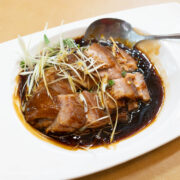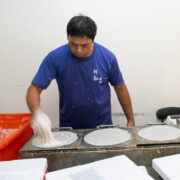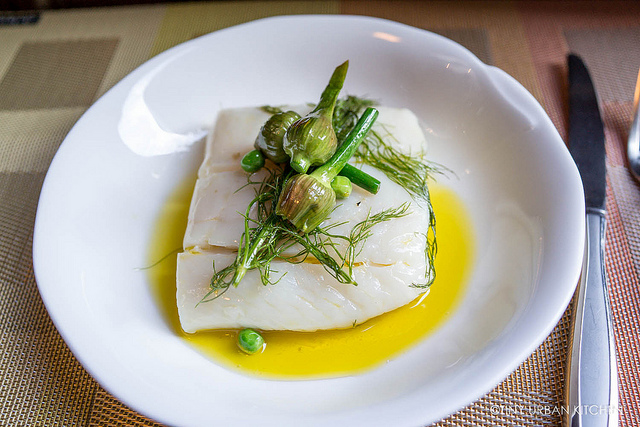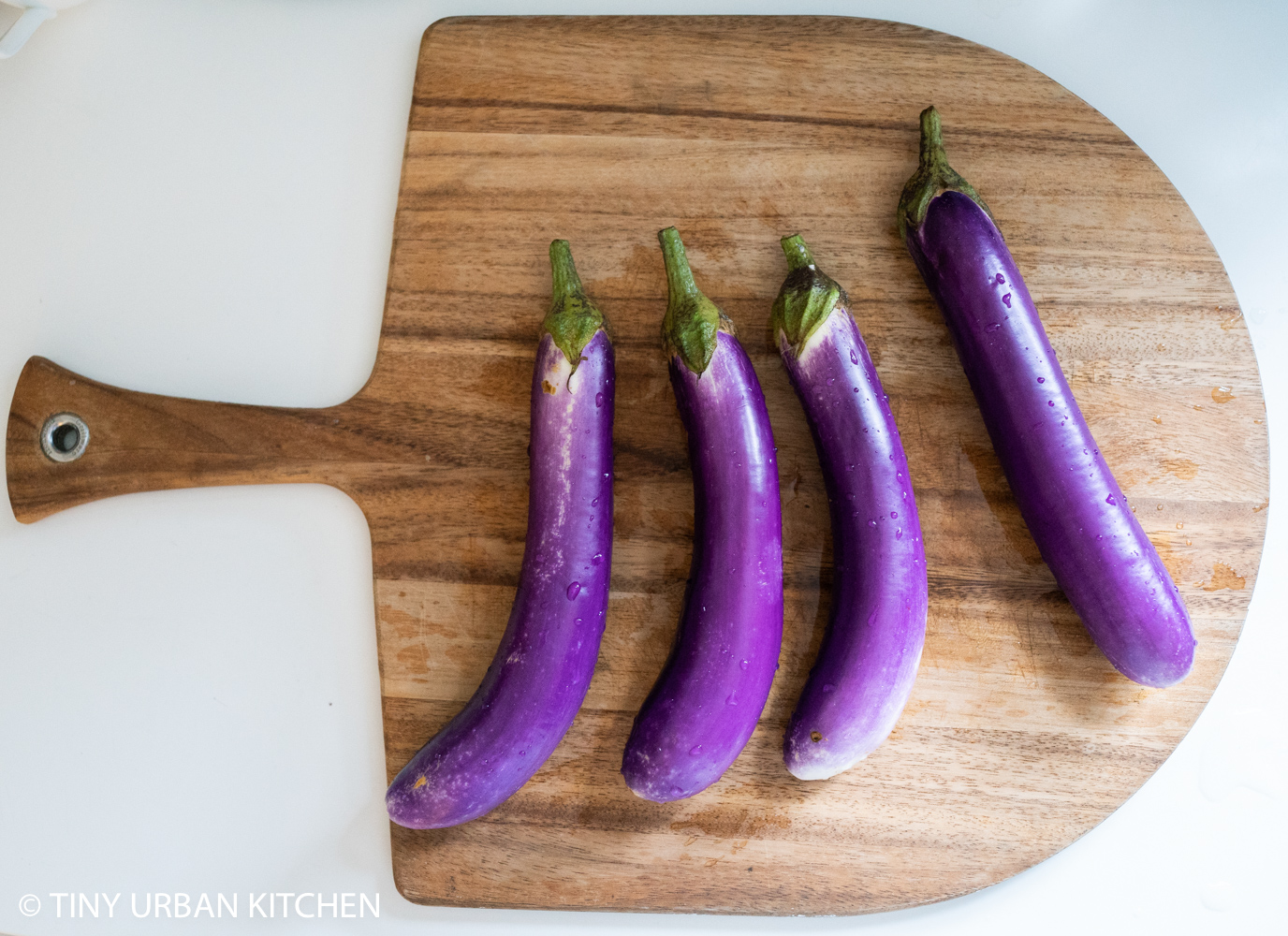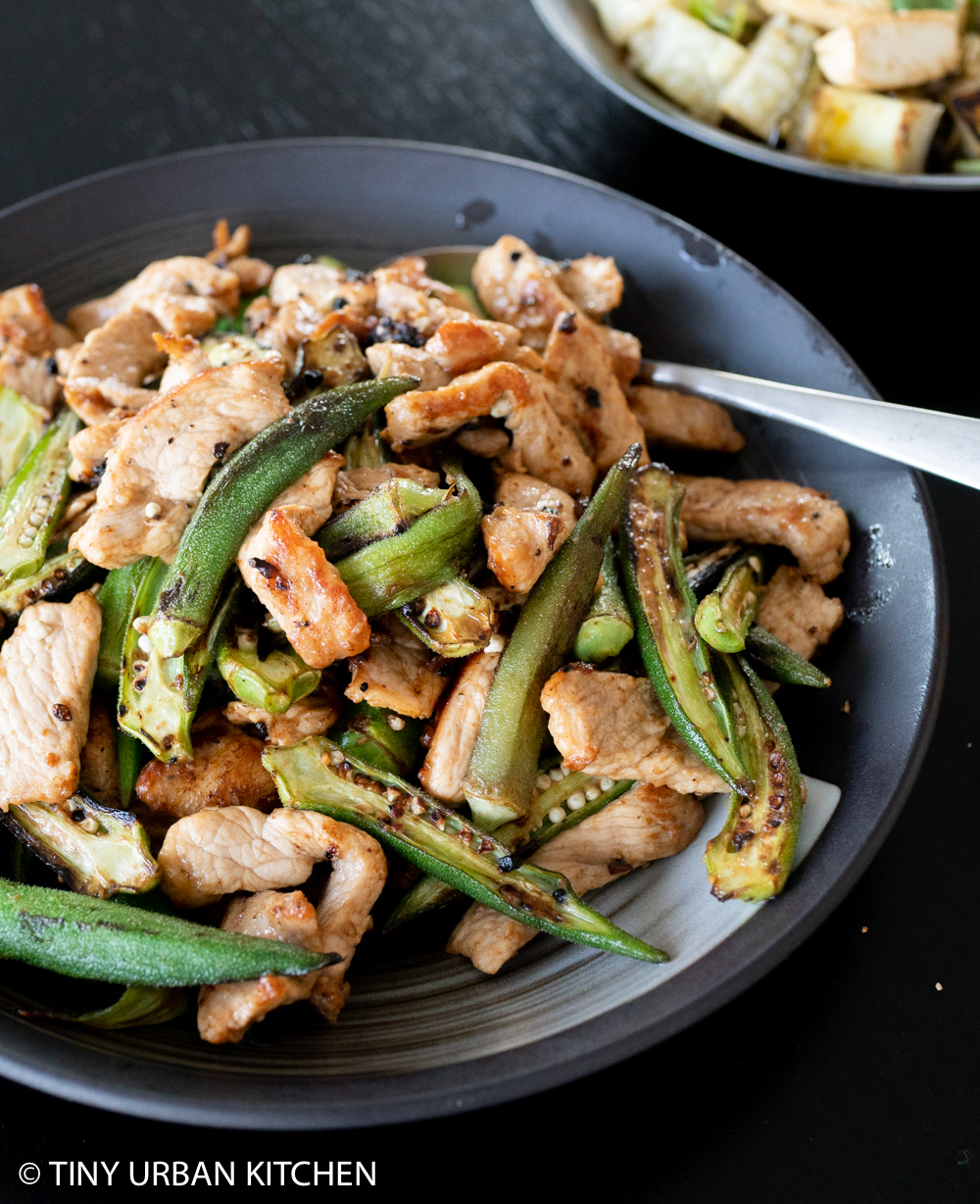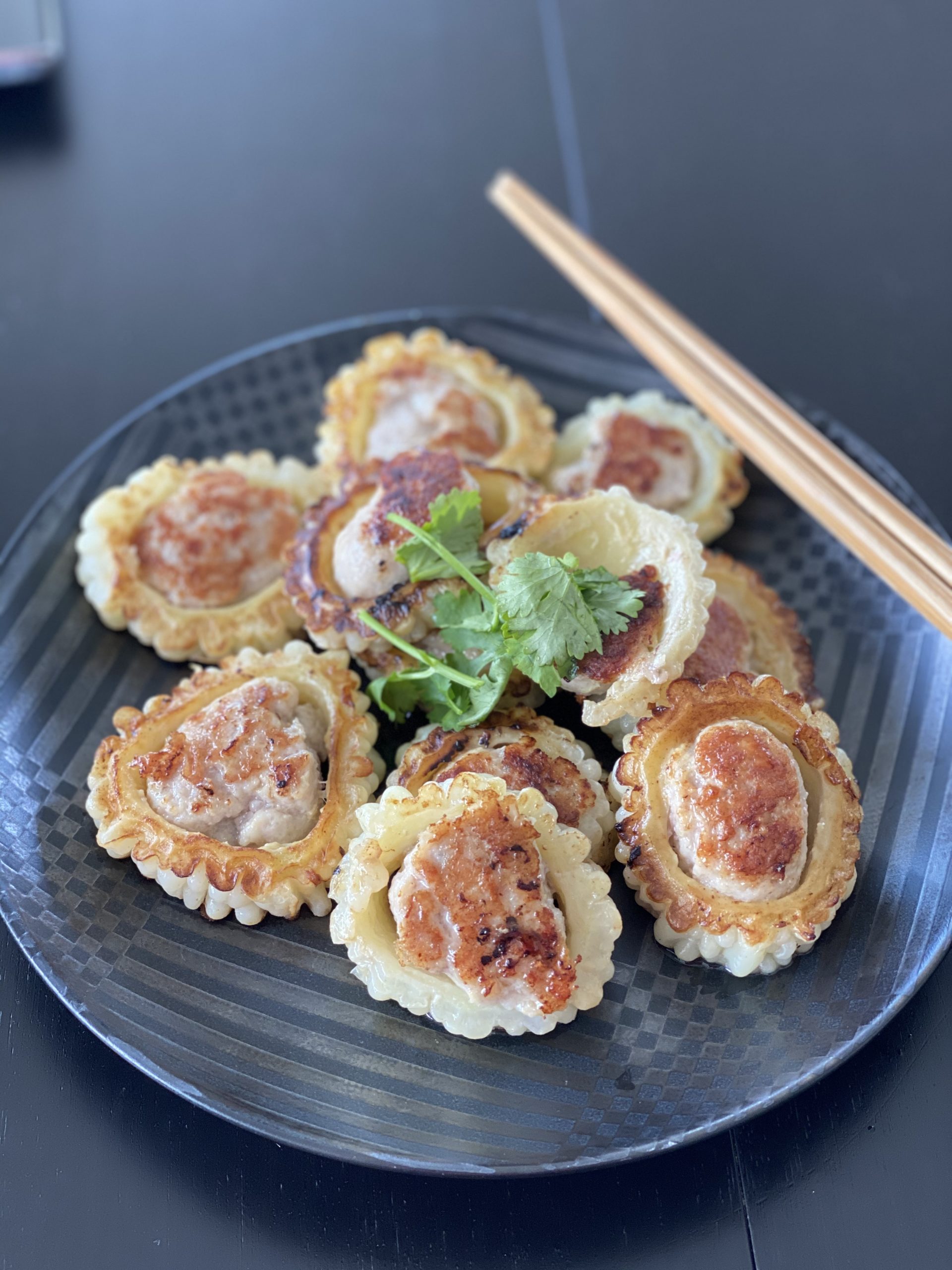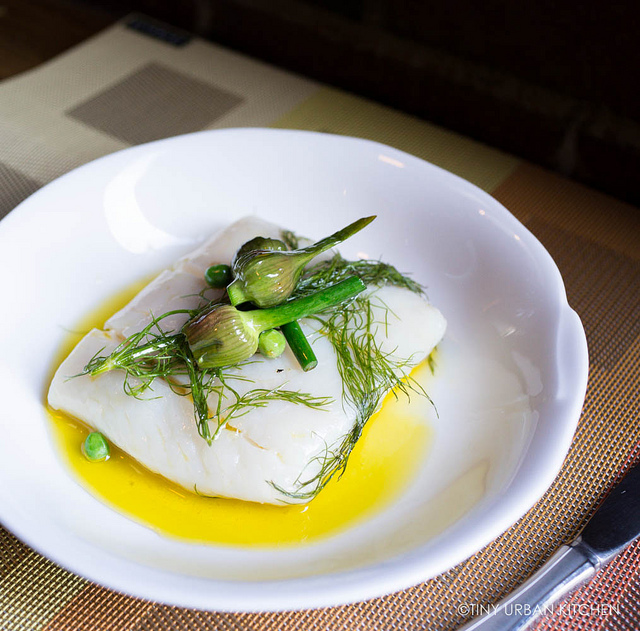
Summer is quickly slipping by me, and I feel like I have barely had a chance to really savor it.Part of it was my crazy June schedule, I guess. We went to Yellowstone with Bryan's parents (mesmerizing place, by the way - one of the top places to visit in the US, in my opinion) for a whole week. After that, it was two weekends in a row where we darted from coast to coast. First to attend a wedding of some friends in Seattle, and then off to another wedding in DC.Needless to say, the pile of unopened mail on my counter is spilling over and I am so behind on processing photographs.It's time like these that I'm grateful for simple meals that I can make at home. Meals which taste better than what I could get at most restaurants and don't necessarily restrain me to be "stuck" at a restaurant for hours.
This simple olive oil poached halibut relies on excellent ingredients to shine. The prep is extremely easy and the entire meal preparation can be done in less than 30 minutes. Just make sure you get the freshest, best quality fish you can find. We (or shall I say, Bryan) hand carried ours back from Pike Place Market in Seattle (along with our 20+ lb Copper River King salmon (!)), and paired it with local, seasonal farm vegetables that came straight from the farmers market.

Generously season the fish fillets with Kosher sea salt (or normal salt is fine too). You can use all sorts of herbs to add another element of flavor. I had a ton of fennel fronds from my CSA farm share, so I went ahead and used those, but you can just as easily used fresh thyme leaves, chervil, or even nothing at all.
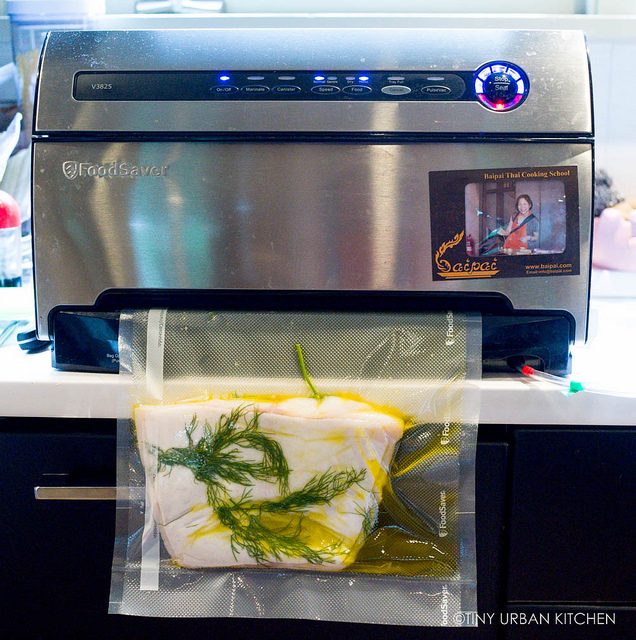
The Sous Vide Supreme is not designed to vacuum seal liquids (unlike more expensive, professional machines), but you can approximate the effect by hanging your vacuum bag way below the machine. This keeps the liquids pretty much near the bottom and not much of it will escape when you seal the bag.
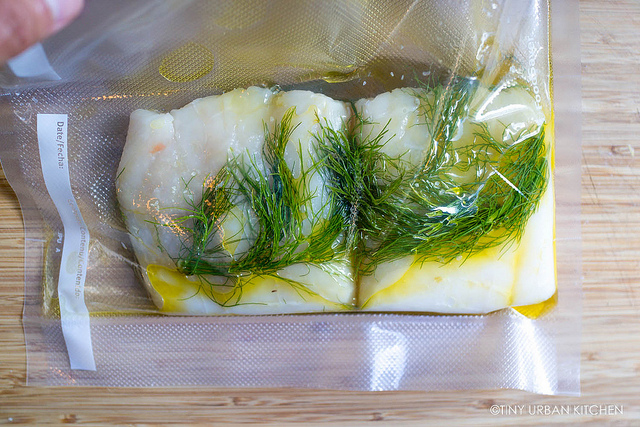
As long as the fish is mostly covered by a thin film of oil, you're good to go! Dunk the bags into your sous vide machine and "cook" at 113°F for about 15-20 minutes. This temperature is great if you want a rare, silky, almost melt-in-your-mouth texture.
If you want something firmer, you may want to increase the temperature. I have not tried other temperatures, but a lot of recipes online go as high as 140 °F, which I am guessing will result in a more "cooked" and flaky texture.
While the fish is cooking, we can prepare our veggies to go on top.
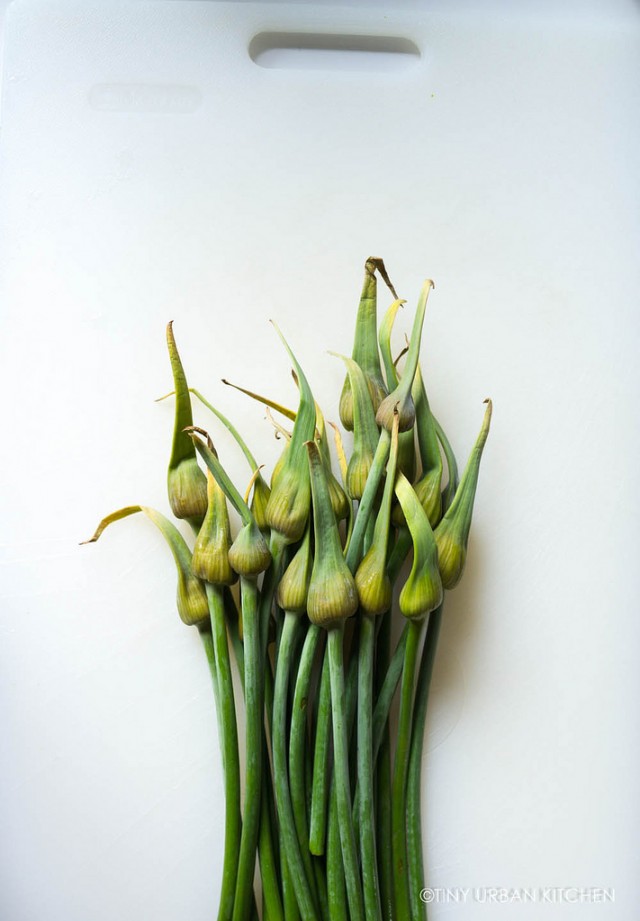
I love discovering new vegetables I've never tried before. That's why I decided to sign up for a farm share this summer. These gorgeous garlic spears, however, did not come from my CSA.
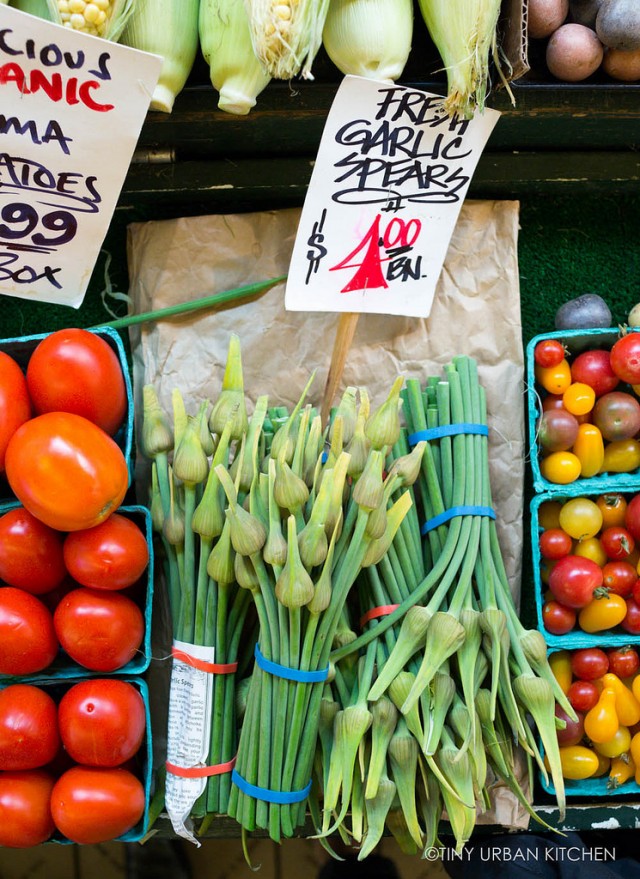 Instead I saw them selling in Seattle at Pike Place Market. Garlic Spears are the young shoots of the elephant garlic. It is actually more closely related to a leek than to garlic scapes, which comes from normal garlic.
Instead I saw them selling in Seattle at Pike Place Market. Garlic Spears are the young shoots of the elephant garlic. It is actually more closely related to a leek than to garlic scapes, which comes from normal garlic.
I was so intrigued by these (especially after loving garlic scapes, garlic greens, and ramps so much the last few weeks), I just had to buy some to bring back with me to Boston.
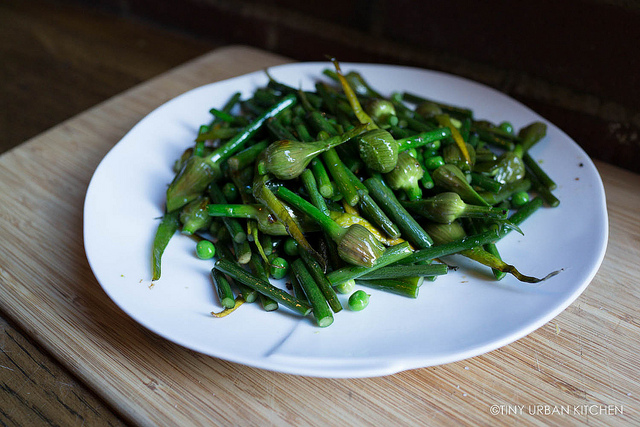
I simple sauteed these spears along with some fresh peas from my farm share. No need to add any garlic, since the spears themselves already have a garlicky flavor. Simple salt and pepper will do.
Many people think that garlic spears taste like asparagus. The stems actually remind me more of Chinese long beans, if you can believe that. The flavor is very mild, but delicious. The flowering heads have more of a sharp zing to their flavor, sort of like raw garlic. The stems temper the spiciness, and the overall combination is very good.
After about 15-20 minutes, gently remove the fish from the bag (it will be super delicate and could totally fall apart on you if you are not careful), and place it on a plate. Pour a bit of the poaching oil over the fish. If you've chosen an intensely colored olive oil, it will look really pretty on the plate. Top with the sauteed vegetables (in my case, the garlic spears and fresh peas), and serve!

Olive Oil Poached Halibut with Garlic Spears and Fresh Peas
serves 3-4
1.5 to 2 lb halibut fillet
~ 1-2 tablespoons extra virgin olive oil per vacuum bag
herbs (e.g., fennel fronds, thyme, or chervil)
kosher sea salt (or regular salt)
pepper (optional)
fresh seasonal vegetables (I used garlic spears and fresh peas)
special equipment: vacuum sealer, vacuum bags, and a sous vide machine or something that approximates it (magic cooker, cooler, or an enameled cast iron Dutch oven).
This is a really flexible recipe, and again, the amounts are just estimates above. Your goal is to have the olive oil cover the fish. Since we are doing this in a vacuum bag, you don't need a ton of oil. The herbs are pretty much up to you. I had fennel fronds from my CSA box, and they added a nice, subtle flavor to the fish. Other herbs, like thyme or chervil, could work fine as well.
Season halibut fillets on either side with salt. Place the fillets in vacuum bags, making sure to keep them in a single layer. You want all the pieces to be roughly equal in thickness so that they will cook evenly. I ended up using two bags in order to achieve this.
Add olive oil and carefully seal the bag taking care to avoid letting oil get sucked up by the machine (see photo above for how best to do this). Place in a heated water bath (sous vide) and cook at around 113° F - 115° F. This will make fish on the rarer side. I've seen recipes that go as high as 140 °F. This will likely result in a more "cooked", flakier style fish. I personally loved the super soft, melt-in-your-mouth quality of the low-temperature cooked fish, but not everyone at the table shared my sentiments (some found it a bit too soft and mushy and wished for more substance).
Cook for about 15 minutes and up to 30 minutes if necessary. Gently (it is really fragile!) remove fish from pouch and set on a plate. Pour some olive oil over the fish for presentation.
Top with sauteed spring vegetables.
Related Posts:
Sous Vide Cooking
Sous Vide Olive Oil poached Salmon
Culinary Tour Around the World - Sous Vide Style
Slow Roasted Salmon with Dill
All Rights Reserved









